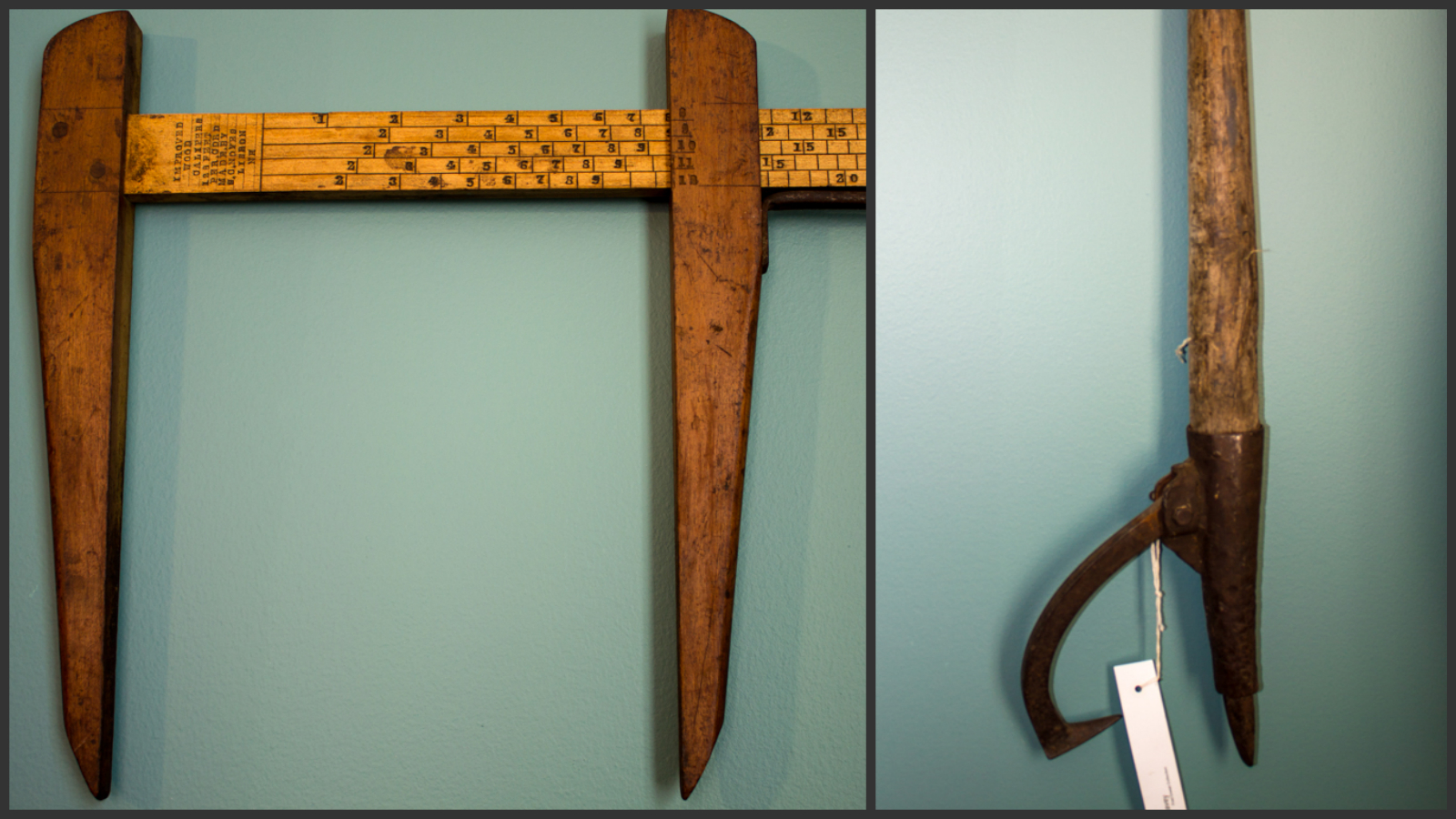19th Century Logging Tools: Log Rule & Peavey
Dublin Core
Title
19th Century Logging Tools: Log Rule & Peavey
Subject
Forests
Description
A log rule estimates how much lumber, in board feet, can be sawn from the log. A board foot is a 12-inch by 12-inch plank of wood 1-inch thick. While different log rules vary in how they estimate this total, they each work by measuring the length of the log and its average diameter.
Invented in 1857 by Maine blacksmith Joseph Peavey, the peavey is used for handling, turning and moving logs. It improved upon an earlier tool, known as a cant hook or cant dog, by adding a sharp metal spike to the end of the wooden lever. More than 150 years later, the Peavey Manufacturing Company in Eddington, Maine continues to produce peaveys, cant hooks, and a variety of other logging tools.
Invented in 1857 by Maine blacksmith Joseph Peavey, the peavey is used for handling, turning and moving logs. It improved upon an earlier tool, known as a cant hook or cant dog, by adding a sharp metal spike to the end of the wooden lever. More than 150 years later, the Peavey Manufacturing Company in Eddington, Maine continues to produce peaveys, cant hooks, and a variety of other logging tools.
Source
Collection of Canaan Historical Society, Canaan, VT
Date
[1850–1899]
Contributor
Fuller, Dennis, Canaan Historical Society
Relation
Format
Photographed 4/9/2014.
Identifier
fsaseminar_303
Coverage
Vermont; 1857–1899



